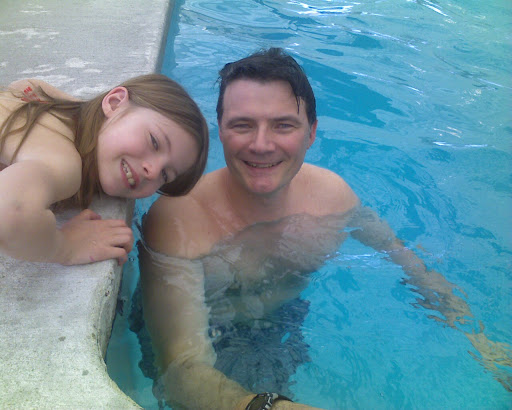 Prolapse is a very common problem for women but very few women are aware of the possibility of doing something about it.Apart from surgical correction, there are many Yogic techniques which help to reintegrate the pelvic structure and which often prove more beneficial in the long run than surgical intervention.Before taking any major steps towards removing this problem, it is important that we understand what prolapse is and how it comes about.
Prolapse is a very common problem for women but very few women are aware of the possibility of doing something about it.Apart from surgical correction, there are many Yogic techniques which help to reintegrate the pelvic structure and which often prove more beneficial in the long run than surgical intervention.Before taking any major steps towards removing this problem, it is important that we understand what prolapse is and how it comes about.WHAT IS PROLAPSE
Prolapse is the falling out of place of the internal organs in the pelvic region of the body.Sometimes organs move from their original position and impinge on other parts in the pelvic cavity.There are many types of Prolapse but two are very common.They are Prolapse of the rectum and Prolapse of the bladder.
1.RECTOCELE (PROLAPSE OF THE RECTUM)
In Rectocele, parts of the body involved are vagina, rectum, muscle and tissue separating and supporting the rectum and vagina.A rectocele usually occurs if the lower part of the vagina becomes weak; when this happens the rectum can then bulge into the vagina.The rectum may collapse into or even beyond the external anal sphincter, causing lower back pain on defecation, and irritation with some pain in the anal area.The uterus may drop from its original position into the vagina, or in severe cases, protrude externally.This is not painful, only a dull ache in the lower back is apparent.This condition is a*sociated with frequency, or inability to control the flow of urine so it may be pa*sed when you laugh or cough.
Normally the uterus is anteverted, facing forward, but it may turn backward and lie against the rectum in which case it has retroverted.This may be a congenital condition (a malformation which one is born with) or it may develop later from strenuous lifting, etc.If a retroverted uterus impinges on the rectum, it produces the symptoms of constipation and an uncomfortable sensation when seated or pain when having sex.In pregnancy it can lead to miscarriage.
2.CYSTOCELE (PROLAPSE OF THE BLADDER)
In cystocele, parts of the body involved are vagina, bladder, muscle and tissue separating and supporting the bladder and vagina.With the bladder sitting directly on top of the vagina if there is weakness at the top of the vagina then sometimes the bladder can drop and bulge into the vagina.The bulge happens through a defect in the fascia (This is the connective tissue that separates the vagina from the bladder).A bulge of this type is called an anterior prolapsed and indicate problems with pelvic support tissues (fascia, ligaments and muscle). The symptom presented in cystocele is frequency of the urine because the bladder can never be fully emptied, urine retention (known as stasis) also occurs giving rise to recurring bladder infections.
HOW IT COMES ABOUT
The pelvic contents collapse because weakened ligaments and muscles fail to hold the organs in their correct position.The ligaments are fibrous structures and resemble strong ropes.These are attached to the bony pelvic wall and form a network in the pelvic floor offering their support to organs and anchoring them in position.The central point of this ligamentous and muscular framework is the perineal body, a fibro-muscular node lying approximately two inches inside the body above the perineum (the area between the anus and vagina).From this node eight important muscles and their ligaments arise in addition to connecting fibres to the rectal and anal canal.If this is damaged, the function of the wh*le supporting system is affected, and the organs drop out of place.This allows gravity, another influence exerting itself on the pelvic area, to have an effect too.Gravity pulls and draws the organs downward and due to impaired support they are unable to resist its force.
CAUSES
The cause of weakened ligaments and muscles is often from childbirth or may occur due to constipation or frequent bouts of diarrhoea.At the time of childbirth excessive energy is used and a tremendous amount of stress and strain is brought to bear upon the floor of the pelvis.In cases of diarrhoea or constipation this is also true.So these muscles need to be strong to facilitate the tremendous strain that is brought to bear on them during these periods.In prolapse this strain is so great that some muscles and ligaments are unable to withstand it, and they either stretch or tear.
Though there is not a lot of pain a*sociated with these conditions, continual discomfort is experienced which tends to make you very concerned about yourself.An understanding of your inner framework and what brings about these conditions is helpful in alleviating anxiety and enables you to confront the problem with common sense.
BECOME AWARE OF YOUR BODY
If you become aware of your physical body you will realize that energy is the ingredient that activates every cell within it.In Kundalini Yoga the basic seat or source of this energy is Mooladhara Chakra, the root or support centre.Its physical counterpart is the same perineal node as previously discussed.On the psychic level, this node is considered to be the seat of the life force or Shakti which is not only the fuel for our physical body, emotions and feelings, but for our spiritual aspirations as well.This area is very sensitive to the impact of energy, or to the lack of it.With emotional upsets and conflicts, the energy is blocked or depleted; its creative potential is lost, and physical vitality diminishes.If the blockage continues, energy buildup intensifies until the energy explodes, dissipating itself in a direction of quick release such as diarrhoea.Such explosions may have a damaging effect on the muscles and ligaments, especially if they are already in a weakened condition.
Thus it is extremely important to keep the perineal area strong and active.This will help you in childbirth and ensure that you avoid prolapse in later life.It will also help to rectify menstrual and sexual disorders.When you become aware of your pelvic structure and the seat of energy centred in the perineal node, you can begin to strengthen them through specific Yogic practices.This will help you to integrate and balance the energies responsible for physical, emotional, mental and spiritual well being, so that you again become a healthy, happy and wh*le woman.
YOGIC TREATMENT
If you suffer from Prolapse or its complications, here is a specific Yogic treatment for these conditions.If possible you should come to our studio to meet us so that full instruction can be given about the Yogic treatment.
1.Begin with Aum chanting for 5 minutes and then perform some or all of the following Asanas:
ASANAS
Prepratory practices part 2 (Read my article Yogic Home Work)
Vajrasana, Shashankasana, Majariasana, Kandharasana, Naukasana, Bhujangasana, Shalabhasana, Vipareeta Karani Mudra.
PRANAYAMA
Ujjayi, Anulome-Vilom / Nadi-Shodhana
BANDHAS AND MUDRAS
Sit in a comfortable Meditation posture, preferably Siddha Yoni Asana, and perform the following Mudras and Bandhas.You may practice all of them or choose the one which is most relevant to your specific condition:
- Ashwini Mudra - Contraction of the anal sphincter
- Vajroli Mudra - Contraction of the urinary opening
- Moola Bandha - Contraction of the perineal node
- Uddiyana Bandha - Contraction of the abdominal muscles
NOTE
Always practice on an empty stomach, preferably early in the morning after bathing and emptying the bowels.Use a quiet room where you will not be disturbed, and allow yourself at least half an hour for the practices.
SOME MORE SUGGESTIONS
- Repeat the same program in the evening.
- Throughout the day lie down in Uttan Padasana, with both legs stretched out straight in front of you, in preference to other sitting postures as it pulls the pelvic organs upward.
- Avoid sitting in the squatting position as it strains the pelvic muscles and pushes the organs downward.Excessive use of the squatting position over a long period of time may bring on prolapse in ladies who are weak in the pelvic area.
- Before lunch do Vipreetkarni Mudra for up to 5 minutes.
- Lie down after a meal with a pillow under your back.
- The most important exercise is keeping a hard pillow under the buttocks instead of under the head.Sleeping in this position will help the uterus to return to its normal position.If you lie with knee touching you breasts that will also help the uterus to resume its normal position.
- All these exercises should be followed for at least 6 months for better results.
- Don’t lift heavy weights.
- Hip Bath is very useful.
CONCLUSION
With regular practice of these Asanas, Mudras and Bandhas you will find that your condition becomes more manageable.It may even fully correct itself, but don't expect immediate or miraculous results.In the Yogic Treatment of Prolapse, progress is generally slow, especially if the structural damage is severe.Once a ligament has torn away, it is not easy to reconstitute it through Yogic Therapy, but it is still worth a try before submitting yourself to the surgeon.However, if the structural damage is less severe and the ligament is only stretched or slightly torn, you will find Yogic Therapy most beneficial.During the course of your practice you will also discover that emotional instability, lethargy and depression have become problems of the past and you will enjoy a more energetic and fulfilled life.
AUM SHANTI
If you feel inspired by this article, feel free to publish it in your Newsletter or on your Website.Our humble request is to please include the Resource as follows: -
Courtesy: Dr.Rita Khanna’s Yogashaastra Studio.
A popular studio that helps you find natural solutions for complete health.
Also conducts online Yoga Courses & Naturopathy Guidance.
Mobile: + 919849772485
Ph:-91-40-65173344
Email: yogashaastra@gmail.com
Website: www.yogashaastra.in
Voters blame Bush more than Obama for the economy





















No comments:
Post a Comment
Note: Only a member of this blog may post a comment.